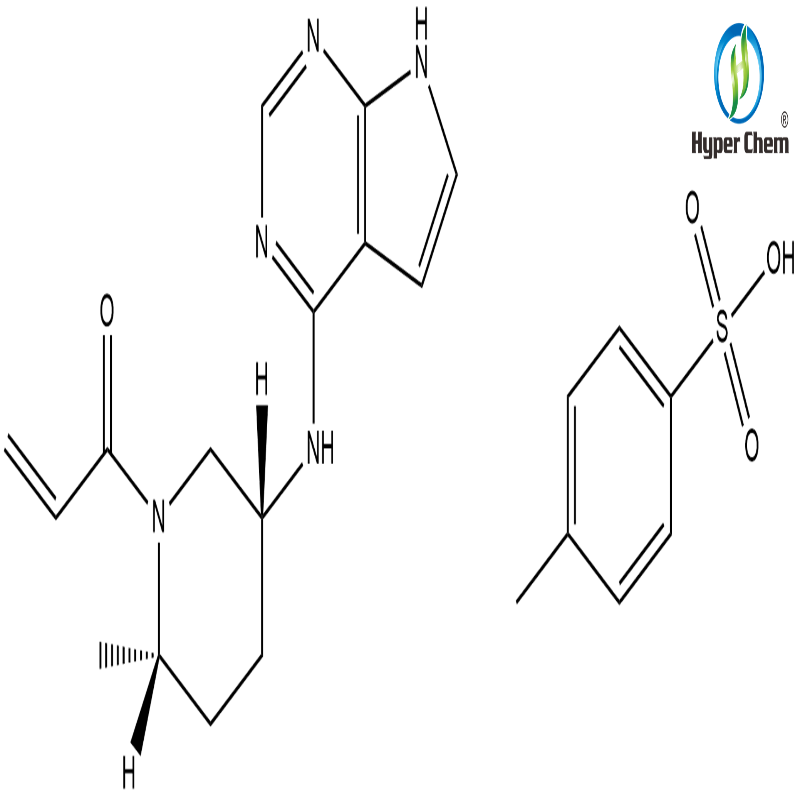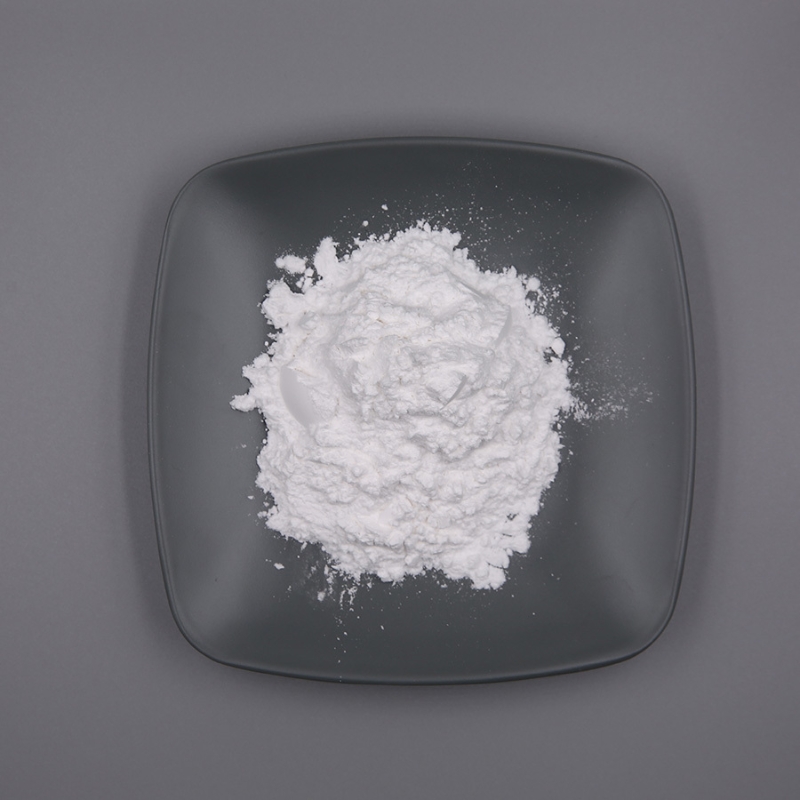Too late for an immune response: How cytokine storms accelerate the disease.
-
Last Update: 2020-07-22
-
Source: Internet
-
Author: User
Search more information of high quality chemicals, good prices and reliable suppliers, visit
www.echemi.com
The new coronavirus (2019ncov) epidemic in 2019 has brought some unfamiliar terms into the public's attention, such as "cytokine storm".experts of first-line treatment said that some of the patients with new crown disease in the early stage are not very dangerous, but they will suddenly accelerate in the later stage. Novel coronavirus pneumonia is a major node in the, especially in many patients. It is an important node in the transition from mild to severe and critical illness in new crown pneumonia patients, and also an important cause of death in critically ill and critically ill patients.how is the cytokine storm generated and how can it be controlled? The liaison officer of the immune system. The immune system is the security guard of the human body. Its "army" is all kinds of immune cells.the "main force" of innate immunity, such as macrophages, dendritic cells and neutrophils, can recognize various pathogenic microorganisms in nature and produce a variety of cytokines.cytokines are like the "liaison officers" between the innate immune system (left circle) and the secondary immune system (right circle), forming a network between the immune cells of various "services" to transmit information, so that the human body can control and remove pathogenic microorganisms timely, quickly and accurately.(image source: Nature Reviews cancer) cytokines are a large class of multifunctional, low molecular weight, secretory proteins, which are easier to reach other parts of the body through blood and lymph circulation, such as kidney, liver, bone marrow, spleen and lymph nodes.when the body is infected by pathogenic microorganisms, immune cells, epithelial cells at the infection site and vascular / lymphatic endothelial cells will produce a variety of cytokines, which will gather immune cells to the infection site to form a defense response to eliminate infection.cytokines can be divided into two categories: one is proinflammatory cytokines, which can help activate many kinds of immune cells and promote the occurrence and development of inflammatory reaction.the second type is anti-inflammatory cytokines, as the name suggests, can subside or inhibit the inflammatory response and return the body to homeostasis.when infected by pathogenic microorganisms, various cytokines released by immune cells, epithelial cells, endothelial cells and so on, through the receptors on the surface of other cells, establish the network of various cytokines and even various immune cells, and precisely and timely regulate the process and degree of anti infection immune response.when the body uses cytokines and other immune effector molecules to remove pathogenic microorganisms, the inflammatory reaction subsides and the body returns to homeostasis.for example, IL-6 can not only promote the expression of IL-1 β and TNF α, but also help other lymphocytes to activate or recruit more neutrophils and macrophages to accumulate in infected tissues.cells (such as regulatory T cells, Treg) and cytokines (IL-10 and TGF - β) play an important role in the regression of inflammatory response.the main types of cytokines include: interleukin (IL), interferon (IFN), chemokine (CK), tumor necrosis factor (TNF), transforming growth factor beta (TGF - β) family, colony stimulating factor (CSF) or growth factor (growth factor). How does the "cytokine storm" phenomenon occur? There is a Chinese saying "too much is more than enough", which is suitable to describe the dual role of inflammatory response as a double-edged sword.if immune cells and cytokines are over produced, cytokine storm will be produced, which is an important cause of acute respiratory distress syndrome and multiple organ failure.the concept of "cytokine storm" originated from James L.M. Ferrara, an American scientist, in 1993. He found that after organ transplantation, if the transplanted organ is regarded as "non self", immune rejection will occur, and IL-1 in body fluid will be abnormally increased hundreds of times.in the following ten years, the meaning of "cytokine storm" has been continuously expanded, including the description of severe sepsis caused by bacterial and fungal infections, and pneumonia caused by viral infection.in recent years, in the process of cart treatment of tumor, some patients will produce a lot of IL-6 and other cytokines symptoms, and some clinicians have become a cytokine storm, so active treatment measures should be taken to eliminate the inflammatory reaction.when a large number of pathogens invade or infect highly pathogenic pathogens, the body mobilizes all kinds of natural immune cells, including neutrophils, macrophages, dendritic cells, etc., and cooperates with secondary immune reactions, including T cells and B cells, to produce an acute inflammatory response against infection.if the pathogen is not removed in time, a variety of immune cells and cytokines will form a continuously amplified and hyperactive immune response, which will lead to uncontrolled inflammatory reaction and form cytokine storm, causing damage to organs and tissues.A schematic map of cytokine storm mechanism ininfectious diseases (source: respiratory timing, WeChat official account, author plus small modification), severe influenza or viral infection, such as influenza virus, SARS-CoV and MERS-CoV, all show high levels of cytokines and severe acute lung injury, and are associated with high mortality in patients with severe diseases.recent studies have pointed out that cytokine storm also occurs in some severe patients with severe lung injury caused by new coronavirus infection.NCV is easy to infect middle-aged and elderly patients or patients with chronic disease background. This may be due to the consumption of hematopoietic stem cell bank caused by long-term chronic inflammation or aging, or the immune cell function is low. In response to severe infection, it is more likely to cause cytokine storm, and the prognosis of the disease is relatively poor.inflammation is originally the immune system's counterattack against the invading virus or bacteria, but the cytokine storm caused by excessive inflammatory reaction has become the killer of aggravating the patient's condition.how does a doctor know that there is a "cytokine storm"? At present, monitoring the content of various cytokines and the composition of various immune cells in the peripheral blood of patients is a routine and easy analysis method, which can roughly show the immune response status of patients to infection.novel coronavirus and monocyte macrophages in alveolar and interstitial tissues, for example, can be detected in patients with severe pneumonia. Therefore, the expression levels of chemokines in neutrophils and mononuclear macrophages in lung infiltration will be changed. These chemokines can be detected in blood samples of patients with SARS, MARS and new coronavirus infection.in addition, the level of anti-inflammatory interleukin-10 (IL10) was higher in severe sepsis patients and severe pneumonia patients with viral infection.but the changes of cytokines in different disease conditions are not completely the same.in the pathological sections of a limited number of new coronavirus infected dead patients, no serious damage to immune organs such as spleen has been found, but there are also a large number of infiltration of monocyte macrophages in alveoli, pulmonary interstitium and perivenous.the decrease of CD4 + T cells and CD8 + T cells in peripheral blood was also found by flow cytometry, suggesting that there is a certain correlation between the dynamic changes of the number or function of immune cells and cytokine storm.the important problem to be solved in clinical practice is: how to use blood test to ensure the sensitivity and specificity of the diagnosis of cytokine storm? This requires a large number of clinical data to determine the peak time of various cytokines. in addition, it is worth noting that most of the effects of cytokines are local, such as the very low levels of cytokines such as IL1 α in peripheral blood. therefore, more detailed inflammatory indicators are needed, including local inflammatory factor levels and immune cell infiltration, but these indicators are difficult to obtain clinically. how to calm down the "cytokine storm"? In mild patients and severe patients, cytokines are higher than the health level, and a considerable part of cytokines only have an increasing trend in severe patients. because the appropriate level of inflammatory factors is necessary for the body's self-healing, so in the face of relatively strong cytokine response in acute infection, we can not simply weaken all of them, but need to determine which inflammation is out of control. "cytokine storm" (photo source: Microbiology and molecular biology reviews into the eye of the cytokine storm) at present, people's understanding of "cytokine storm" needs to be further strengthened, and the best balance state of immune system is still to be found. in clinical practice, some hormones are often used to calm down the cytokine storm, so as to avoid the excessive immune reaction in the body and kill normal tissue cells. glucocorticoids have been included in the previous treatment of critically ill patients with SARS infection. however, there are a lot of suggestions from clinical and basic research. Large dose glucocorticoids should be used cautiously in the treatment, because hormone drugs do not cure the symptoms, but may aggravate the infection in severe patients. at the same time, we need to develop better immunotherapy, such as using specific inhibitors or monoclonal antibodies, which are more likely to benefit patients clinically. in addition to glucocorticoids, the inhibitors or monoclonal antibodies used or tested in clinical practice include anti-il6 antibody or inhibitor, anti-il6 antibody, TNF-a inhibitor and IL-1 receptor antagonist. in addition to cytokines, the abnormal number and functional status of immune cells are also the key to the regulation of diseases. Therefore, the intervention of "cytokine storm" also needs to include immune cells. for example, some patients infected with influenza virus and coronavirus have lymphopenia such as CD4 + T cells and CD8 + T cells. If the number and function of lymphocytes return to normal, they may also cope with the cytokine storm. author's setting: Center for excellence in molecular and cellular science, Chinese Academy of Sciences (Institute of Biochemistry and Cell Biology)
This article is an English version of an article which is originally in the Chinese language on echemi.com and is provided for information purposes only.
This website makes no representation or warranty of any kind, either expressed or implied, as to the accuracy, completeness ownership or reliability of
the article or any translations thereof. If you have any concerns or complaints relating to the article, please send an email, providing a detailed
description of the concern or complaint, to
service@echemi.com. A staff member will contact you within 5 working days. Once verified, infringing content
will be removed immediately.







